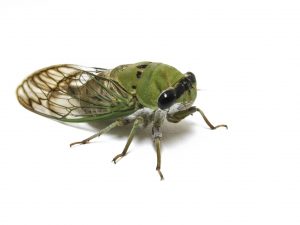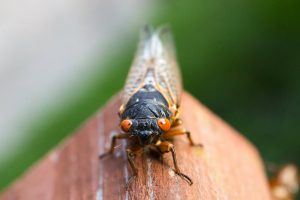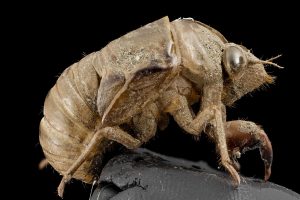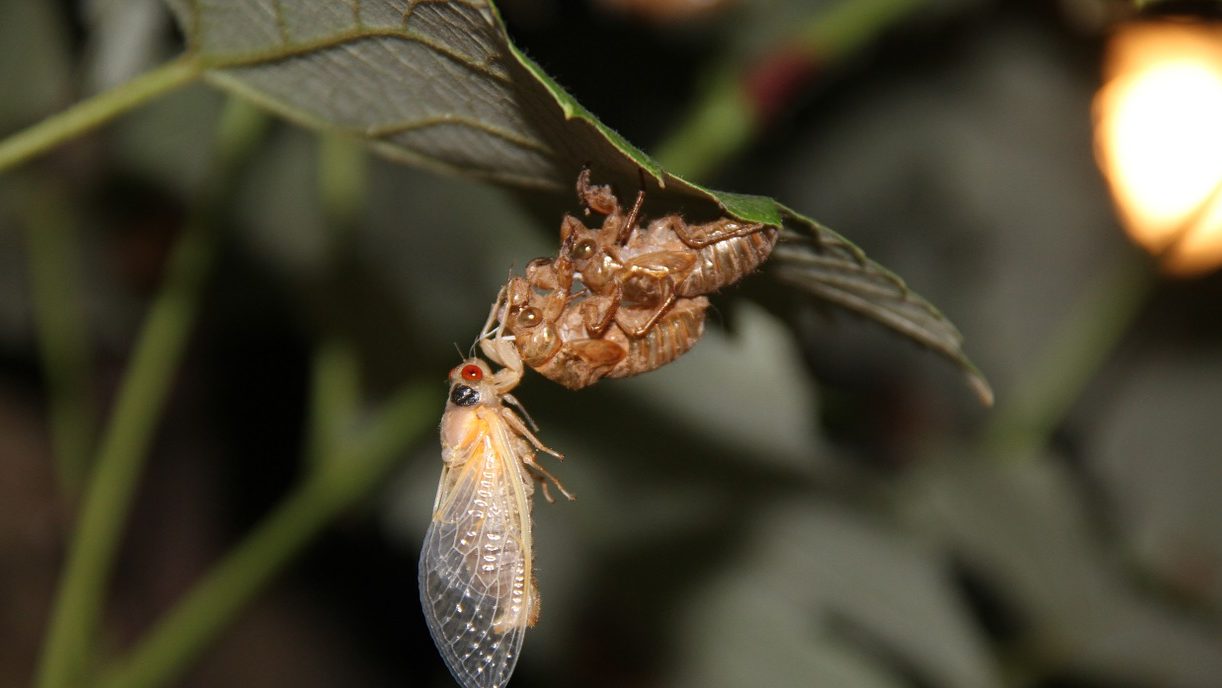
TUSCALOOSA, Ala. — Go outside and just listen.
Frogs may be croaking, owls might be hooting, birds will likely be chirping, singing, screeching or cawing. But what won’t likely be heard any more this year is the loud, incessant droning sound of cicadas that grate on psyches like nails on a chalkboard during Alabama’s spring and summer months.
Around 20 species of cicadas, also falsely known as locusts, claim Sweet Alabama as their home. They crawl from the ground, climb trees and transform into their bulbous-eyed, winged adult forms yearly from May to September, said John Abbott, director of museum research and collections at The University of Alabama.
Abbott said these annual cicadas, as they’re called, emerge after spending two to five years living underground in their nymph forms where they feed on the roots of trees.
Once they emerge, they morph into their flying adult forms, make a bunch of racket – only the males – to attract females, mate, lay eggs in twigs and die in about three to four weeks.
“Adults are flying around, calling for mates – that’s what the noise is, males calling for a mate,” he said. “It is loud. In fact, the loudest insect in the world is a cicada species from Africa.
“The nymphs, whose shells people see, are the longest lived life stage, which is spent underground so you don’t see them most of their lives.”

The annual cicada species are the most common, but there’s also the periodical cicadas that come out infrequently.
“You have annual cicadas every summer, singing in the dog days of summer, which is why they are also called dog day cicadas, and you have the periodical cicadas which come out every 13 or 17 years,” Abbott said.
“We have those around Tuscaloosa, but, right now, we’re seeing the annual ones. The periodical ones aren’t scheduled to emerge here until about 2024.”
Abbott said the reason the periodical cicadas spend 13 or 17 years underground is to throw off the behavioral biorhythm of predators. Just as grizzly bears, for example, instinctively know to head to Alaskan rivers in late summer because ocean salmon annually migrate there to spawn while the bears get to enjoy an all-you-can-eat buffet.
Annual cicadas offer this same sort of buffet-style predictable meal to birds and other animals as they emerge to mate yearly. But the periodical cicadas emerge in large broods only in prime number years in different regions of the eastern U.S.
“One reason, it is thought, that they emerge every 13 and 17 years is because coming out in prime years allows them to better avoid predators,” Abbott said. “Consider if you had a cicada that emerged every 12 years. A predator that emerges every two years would be able to attack them.
“And, so would predators that emerge every three, four or six years, but if you emerge in prime numbered intervals, you are likely to avoid large numbers of predators. Another hypothesis suggests that these prime-numbered development times are an adaptation to prevent hybridization between broods.”

Besides being much longer-lived, periodical cicadas also look different from annual cicadas, and their swarms are larger.
“The periodical cicadas have red eyes, are a little bit on the small side and are darker,” Abbott said. “But the big difference between them is sheer numbers. Periodical cicadas come out in numbers as high as 1.5 million individuals per acre.”
Abbott said cicadas are an important part of the ecosystem because they provide protein to insectivorous animals. But, they can also be problematic in large numbers because they can damage trees at the root, and their noise is a considerable threat to peaceful country living.
“They can be very annoying. They can be so abundant and so loud that I’d say annoyance is the biggest issue people have with them. They make noise during the day and in the evenings, but now their season is coming to a close.”
Contact
Jamon Smith, UA communications, jamon.smith@ua.edu, 205-348-4956
Source
Dr. John Abbott, 205-348-0534, jabbott1@ua.edu
